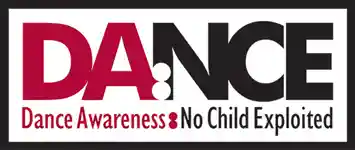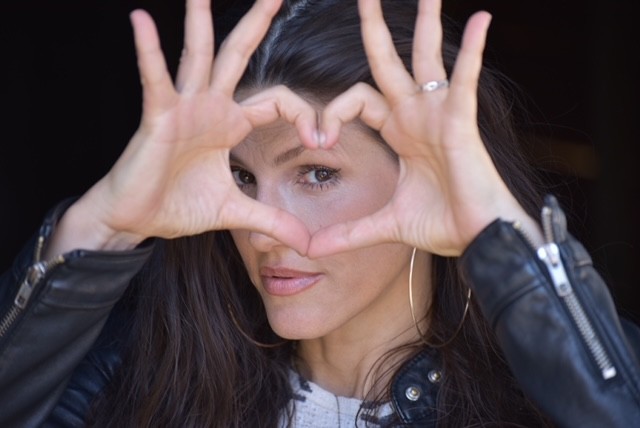‘Today’s Media Culture Is Hypersexualizing Our Children…Learn How You Can Help Stop It‘
Most of you would agree that adults are wired to protect children. At DA:NCE, that’s why our mission centers around the education of caring adults so that they know the differences between healthy and harmful dance. As a starter for your awareness, here’s an invitation to join us by ‘Giving to protect’ our youngest citizens in dance.
Now let’s go deeper into the backstory about how harmful dance connects to a larger picture: the internet, media and porn industry. That big picture allows an understanding for a new cultural pattern that is affecting children in dance: ‘Groomed for Screens.’
We live in a world where children are growing up surrounded by screens. Phones, tablets, TVs, and streaming platforms are always within reach. On the surface, this might look like harmless entertainment, but beneath the bright colors and catchy songs, a troubling pattern has emerged: our children are being groomed—not in the traditional sense by an individual predator, but by the pervasive influence of a sexualized media culture.
This cultural “grooming” subtly shapes how young minds view themselves, others, and relationships—often without parents realizing what’s happening.
What “Grooming” Means in a Media Context
Traditionally, grooming refers to the deliberate tactics a predator uses to prepare and manipulate a child for sexual exploitation. In today’s media landscape, we see a parallel process on a broader cultural scale. Media companies, advertisers, and content creators frequently place children in situations, costumes, or performances that introduce them to sexualized behaviors long before they can understand them.
This can look like:
- Child actors singing lyrics with explicit or suggestive meanings
- Kids’ shows normalizing sexual innuendo or romantic storylines far beyond age-appropriate development
- Costumes and choreography that mimic adult club culture
- Adult sexual themed segments in preschool and middle-school programming
- Subplots in children’s films that glamorize relationships or physical attraction as core identity markers
These moments aren’t one-off accidents—they’re intentionally woven into scripts, storylines, music, and marketing. Children, unable to filter for maturity or context, take these messages in uncritically.
The Neuroscience of Media “Grooming”
Children’s brains are remarkably plastic—meaning they are constantly rewiring in response to experiences, a process called neuroplasticity. Every time a child consumes a piece of media, they’re not just “watching for fun”—they’re forming new neural pathways.
When those pathways are repeatedly activated by sexualized images, lyrics, or scenarios, the brain begins to associate pleasure, attention, or social approval with sexual expression. Over time, this can “train” a child’s brain to see the world—and themselves—through a sexual lens.
Think of it like a well-worn trail in a forest: the more you walk it, the clearer it becomes, until it’s the obvious path to take. In a hypersexualized media environment, that “trail” leads to premature sexual awareness, curiosity, and in some cases, risky behavior.
Why Parents Often Don’t Notice
Media grooming operates with stealth. It hides in humor, catchy jingles, colorful animation, and trending TikTok dances. Because the content often appears “cute” or “playful,” adults may not see the sexual undercurrents—or may casually dismiss them as harmless.
Meanwhile, platforms like YouTube, Netflix, Disney+, and even educational channels mix age-appropriate content with material laced with subtle adult themes. The result is a kind of slow-drip exposure that bypasses parental radar – a slow, long-term poisoning of the young, impressionable and healthy mind of a child.
The Long-Term Harm
The consequences of growing up in a sexualized media culture can be devastating:
- Early Sexualization: Children may adopt sexualized behaviors, styles, or speech far beyond their developmental stage.
- Pornography Addiction: Early exposure to sexual cues can increase curiosity, which—when paired with loosely or unmonitored internet access—often leads to pornography use and addiction.
- Promiscuity: A brain wired to link self-worth with sexual expression may lead to casual sexual encounters as a primary form of connection later in life.
- Damaged Relationships: Unrealistic expectations about romance, intimacy, and beauty can undermine healthy friendships, dating relationships, and eventual marriages.
- Identity Confusion: When sexual identity is emphasized before children have developed a stable self-concept, it can create confusion, anxiety, and pressure to incorrectly define themselves prematurely.
A Real-World Example: Healthy vs. Harmful
At DA:NCE Awareness, we emphasize the differences between “Healthy vs. Harmful” dance. Healthy dance celebrates artistry, athleticism, and self-expression without sexualizing children. Harmful dance mimics adult sexual behavior through provocative moves, revealing costumes, and explicit themes. Our mission is to raise awareness of how this occurs in the beautiful world of dance…and how to avoid it.
This same framework applies to the broader media world. Media can be healthy, inspiring imagination, creativity, and positive values. Or it can be harmful, subtly (or blatantly) sexualizing children under the guise of “entertainment.”
What Parents and Caregivers Can Do
- Preview Content – Watch episodes, movies, or music videos before your child does. Use available tools like www.movieguide.org, https://www.pluggedin.com or https://www.kids-in-mind.com to pre-screen content and make healthy choices in media consumption.
- Talk About What You See – Even young children can understand that “some shows show things that aren’t for kids.”
- Limit Access – Use parental controls, age filters, and limit unsupervised screen time.
- Offer Alternatives – Provide content that teaches virtue, kindness, and resilience without premature romantic or sexual themes.
- Model Healthy Media Habits – Show your child that you also make careful choices about what you watch. “I don’t watch things like that because it’s not good for me.”
Final Word
Hypersexualized media isn’t just “part of growing up.” It’s an intentional, profit-driven stream of messages that shape how children see the world, themselves, and their bodies. Left unchecked, it can rewire the brain to associate personal value with sexual desirability—laying the groundwork for future pornography use, promiscuity, gender confusion and broken relationships.
Parents and caring adults have a choice: we can be passive consumers, or we can be active protectors. The culture will groom children for something—either for God-honoring, healthy maturity or for sexualized self-identity. Which one happens will largely depend on what we allow to shape their young minds.
- If you agree and would like to support the creation of more content raising awareness of how children are potentially being groomed in dance, please visit us at https://www.danceawareness.com/donate/. Celebrate Giving Tuesday by supporting DA:NCE Awareness and help us protect children from a sexualized media culture.
Tony Wilcox is the Executive Development Director for DA:NCE Awareness (www.danceawareness.com), a Sr. Account Executive at iHeartMEDIA and accomplished author. He resides in Southern California with his wife Celeste. They have four daughters and 5 grandchildren…with more on the way.




